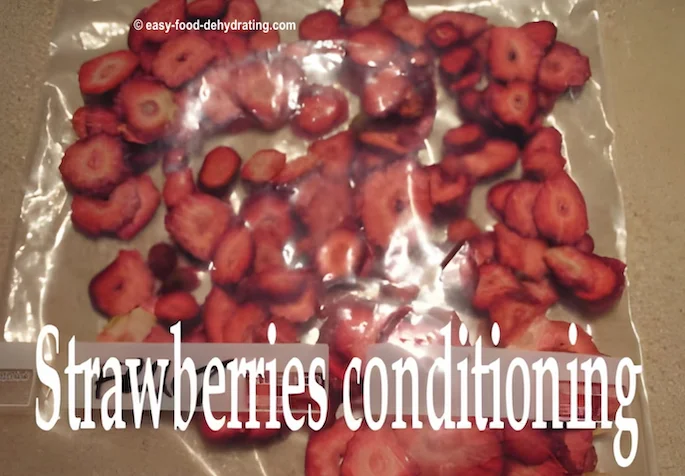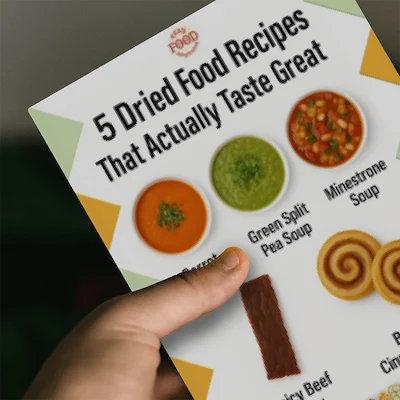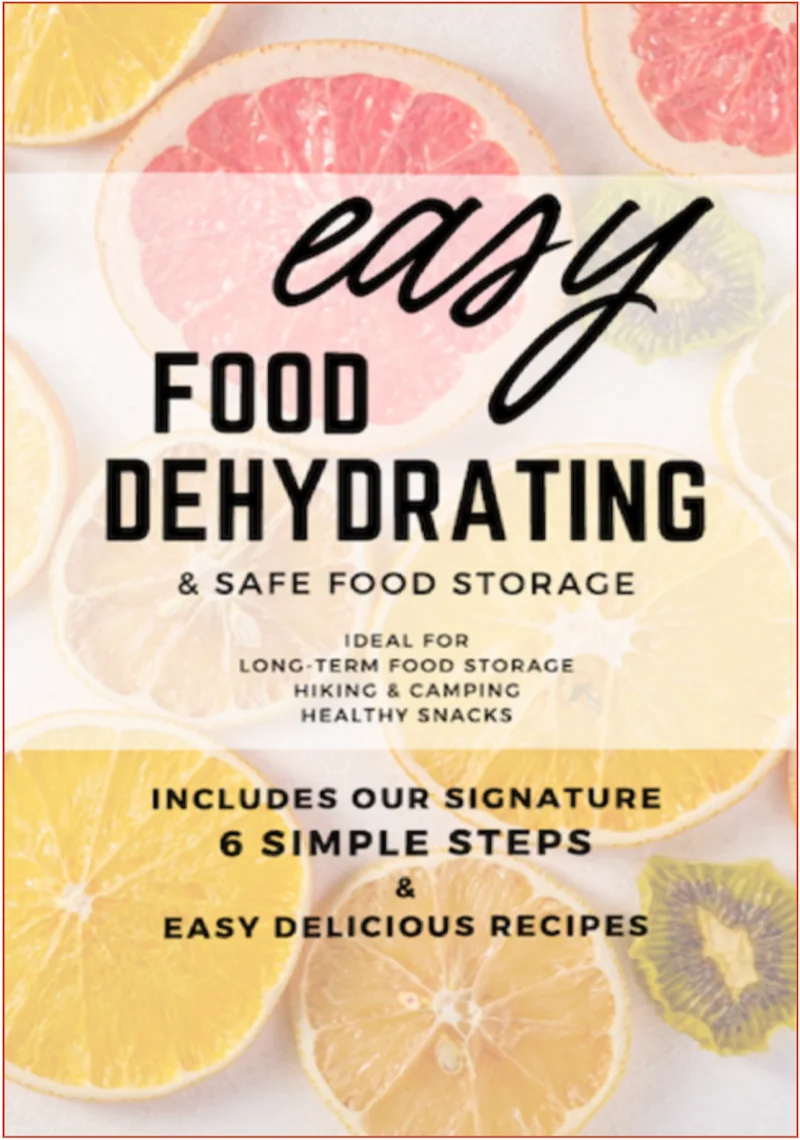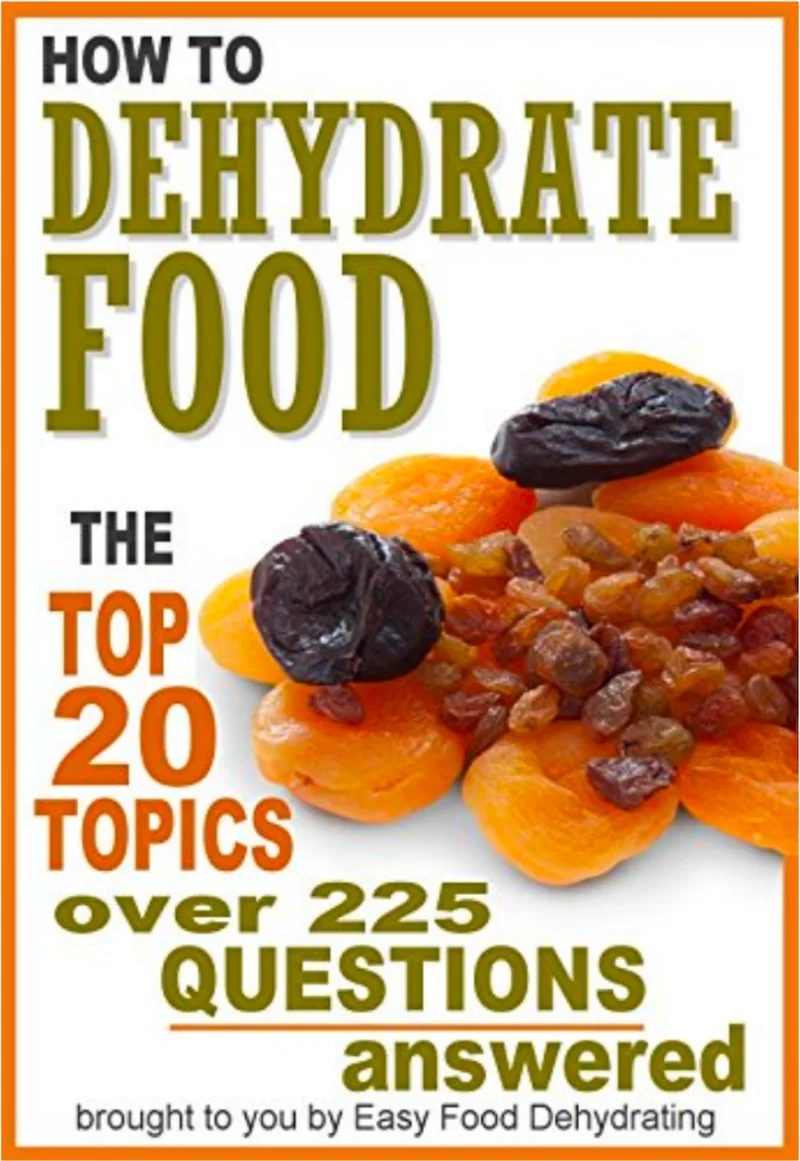What We Mean by “Dehydrate”
Here at Easy Food Dehydrating, “dehydrate” always means using an electric food dehydrator — the easy, reliable way to dry food at home.
- Home
- How to Store Dehydrated Food for Long-Term Freshness
- Conditioning Fruits and Vegetables After Dehydrating
Conditioning Fruits and Vegetables After Dehydrating: Why This Step Matters

Conditioning dehydrated fruits and vegetables might sound optional—but it can make all the difference between food that stores well and food that spoils. This simple step helps remove hidden moisture pockets, reduces mold risk, and improves texture and rehydration results.
✅ Quick Answer: What is conditioning after dehydrating fruits and vegetables?
Conditioning is the process of letting dried food rest in sealed containers at room temperature to allow moisture to evenly redistribute. This step helps prevent mold, improves texture, and ensures your food is safe and ready for long-term storage.
Let’s walk through why conditioning works, how to do it properly, and when you might want to skip it altogether.

Once the dried fruits and vegetables have reached room temperature, place them in freezer-type Ziploc bags, zip 'em up, and leave them on your kitchen countertop for a couple of hours, or overnight.
This helps to disperse any residual moisture evenly among the items in the bag, and that all pieces are at the same level of dryness.
Later, if you feel that the foods are a bit damp, pop it back on the dehydrator and let them condition again briefly. Look, it's better to be safe than sorry, right?
What Kind of Bags Work Best for Conditioning Dried Foods?
Let’s break down which bag types hold up best—and which ones to avoid.
Freezer Bags vs. Sandwich Bags: Which One Holds Up?
Use the Ziploc freezer-type bags. Sandwich-style bags are not strong enough and can easily get punctured by sharp dried foods!
Feel free to reuse the freezer bags because they're not cheap—I do throw them away when I see any sticky residue left behind. NOTE: I will NEVER reuse a plastic bag that has had MEAT in it.
I use
some bags specifically for fruit and I use my black felt-tipped pen to
mark the bags as 'fruit only', and have some bags just for vegetables. It's a plan and it works for me.

Do You Really Need to Condition Dried Fruits and Veggies?
Not every batch needs conditioning, but there are some situations where it really helps. Here's how to tell.
When It’s OK to Skip the Conditioning Step
To be totally honest, conditioning fruits and vegetables after dehydrating is my fourth step and is a step that many seasoned dehydrating folk just don't do. But I won't tell if you won't.
If you feel like your dehydrated food is totally dry enough after the first go-around on the dehydrator, skip this step.
For instance, you may like your dehydrated banana chips to be a little on the chewy side.
But dehydrated mushrooms are a different story. Please read on.
Why Mushrooms Must Be Conditioned—No Exceptions
Mushrooms are a special case in the dehydrating world. Let’s talk about why they demand more attention.
Mushrooms
are well known for needing a second go-around on the dehydrator! You might think they are dry, but they can easily fool you. This veggie needs to be very dry prior to vacuum-sealing. This is the one veggie I would NOT skip doing the conditioning step.
When dehydrating mushrooms, take note of their special dehydrating temperatures. Don't be afraid to give them more time.
NOTE: Some foods will remain sticky, such as dehydrated plums (prunes) and that's OK. But not for mushrooms!
Sticky After Drying? Here’s What to Do
If your food’s sticking together even after dehydrating, don’t panic—here’s how to fix it.
Signs Your Food Needs More Time in the Dehydrator
If your fruits or veggies are still sticking together a bit too
much in the Ziploc bag, put it back on the
dehydrator for an hour or so as mentioned earlier.
Let the food cool off again.
Then put the dried food back in the bag(s) again for a couple of hours. The food should now be ready for vacuum sealing!
Why Conditioning Boosts Flavor, Texture & Storage Safety
Here’s how a little patience can dramatically improve your food’s final quality.
Conditioning vs. Overdrying: What’s the Difference?
Here are some key points:
- Conditioning involves letting dehydrated food sit sealed at room temperature after initial drying.
- This allows moisture to evenly redistribute in the food, which improves texture.
- Conditioning is especially recommended for fruits, vegetables, and meat jerky.
- Not conditioning can result in food that is still leathery, tough, or prone to mold if any moisture remains.
- Proper initial drying is still critical to prevent spoilage during conditioning.
- Some dehydrator manuals advise conditioning while others don't mention it.
So while not mandatory, conditioning can optimize the final quality and storage life for many dehydrated foods. But the extra time and countertop storage space required means it is skipped by some.
How Conditioning Helps Tough Foods Stay Chewy, Not Brittle
Tougher foods need a little more time to settle. Here's what that looks like in practice.
Real Examples: Fruits vs. Mushrooms vs. Jerky
Here’s why it’s worth taking the extra step to condition tougher, denser dehydrated foods before vacuum sealing them:
- Even moisture distribution – Some dense foods hide pockets of moisture inside, even after drying. Letting them rest helps that leftover moisture work its way out naturally.
- Finishes chemical changes – Dehydration kicks off transformations like starches turning into sugars. A little rest time allows those changes to finish properly.
- Improves texture – Foods can feel stiff or brittle right out of the dehydrator. Conditioning helps restore a bit of flexibility, making them less “crackly” and more pleasantly chewy.
- Increases rehydration success – Jerky, for example, rehydrates more evenly if the moisture inside has had a chance to balance out first.
- Helps prevent mold – Conditioning cuts down on the chance that hidden interior moisture causes spoilage later.
- Enhances flavor – Oils and subtle flavors redistribute better when the food is given time to settle.
So, when it comes to thicker items like meats, fruits, and some veggies, taking time to condition them really pays off. You’ll end up with better texture, better taste, and food that stores more safely long-term.
Your Food Conditioning Questions—Answered
Still unsure about conditioning? These quick answers can help clear things up.
How long should I condition dehydrated fruits and vegetables?
How long should I condition dehydrated fruits and vegetables?
Let them sit in freezer-style Ziploc bags for 6–24 hours at room temperature. This allows moisture to equalize across all pieces.
Do I need to condition food if it feels completely dry?
Do I need to condition food if it feels completely dry?
If you’re confident the food is fully dry, conditioning is optional—but still smart for dense items like mushrooms or uneven batches.
Can I condition food in jars instead of bags?
Can I condition food in jars instead of bags?
Yes! You can use clean, dry jars with loose-fitting lids. Just avoid airtight sealing until after conditioning is complete.
What should I do if I see condensation in the bag?
What should I do if I see condensation in the bag?
Put the food back in the dehydrator for another hour or two, let it cool, and try the conditioning step again.
So whether you're drying mushrooms, apples, or even banana chips, conditioning helps your dehydrated food reach its full potential—flavorful, flexible, and safely stored. Taking this one small step can mean fewer mold risks and easier rehydration down the line.
Before you head off, don’t forget to grab your free 5 Dried Food Recipes You'll Actually Love PDF (below)—featuring carrot soup, minestrone soup, split pea soup, spicy beef jerky, and banana cinnamon rolls!
Get 5 Dried Food Recipes You'll Actually Love
Here's where you can get your copy of our all new
5 Dried Food Recipes (That Actually Taste Great)
They're my all-time favorite easy dried food meals!
Get it here right now.
For Free!
Before You Go...
If you enjoyed this page, tap the ❤️ in the lower right-hand corner.
It saves this page to your Grow bookmarks so you can find it again later.
You’ll also see quick share buttons to copy the link, post to Facebook,
or save it straight to Pinterest.















